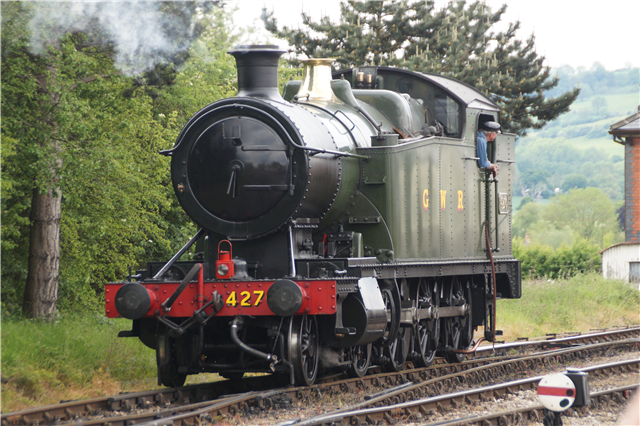The Great Western Railway (GWR) 4200 Class is a class of 2-8-0T steam locomotives.
After the GWR took over operations and then absorbed the various South Wales based railways from the late 1800s, operational practice on most was defined by moving heavy coal trains on sharp, steep and undulating tracks. Thus many of these railways - especially the dominant Taff Vale Railway - specified and used an 0-6-2T, which gave maximum tractive effort whilst riding well on the undulating track.
With coal trains increasing in size and scale, the GWR needed to develop a more powerful locomotive to meet these requirements, on what were relatively short haul routes. Thus in 1906, Chief Engineer George Jackson Churchward took the basic design of his GWR 2800 Class and adapted it. After proposing a 2-8-2T design, Churchward developed the UK's first 2-8-0 tank engine, through concerns that the longer frames required for a 2-8-2T would restrict operation in the South Wales Valleys.
In 1921, having also run out of allocation numbers, the class received its first major upgrade. Increasing cylinder diameter from 18.5 inches to 19 inches increased tractive effort to 33,170 pounds, thus creating the distinctive later GWR 5205 Class. To increase their operational ability across the wider GWR network, Charles Collett took the decision to alter some locomotives still in production to 2-8-2T by adding a bolt-on 4 feet extension to the frames to accommodate a pair of rear trailing wheels. This created the GWR 7200 Class 2-8-2T.
105 were built, 5 have been preserved
